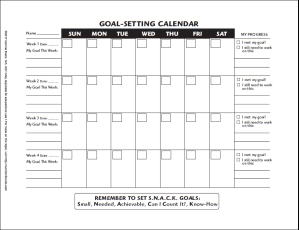Healthy Eating One Step at a Time

Making food choices you can live with is the key to long term health
March is National Nutrition Month®, which is a great time to reflect on your eating habits and set some goals for long term, sustainable changes. This year’s theme is “Put Your Best Fork Forward.”
But let’s be honest. Most of us are falling short when it comes to eating well on a daily basis. According to the 2015–2020 Dietary Guidelines for Americans, almost 75% of the population has an eating pattern that is low in vegetables, fruits, dairy, and oils while the majority of Americans of all ages exceed the recommendations for added sugars, saturated fats, and sodium.
Reversing well-entrenched habits isn’t always easy but the benefits are well worth the effort. Improved energy, better school, sports and work performance, and less chronic disease are just a few reasons to focus on nutrient-dense food choices. Below are some simple steps to get you started.
Start by writing it down
Write down everything you eat and drink for a minimum of two week days and one weekend day. Honesty is the best policy here and you don’t need to share with others (except your dietitian ![]() ). You will soon start to see patterns emerge. Are you skimping on whole grains? Eating only beige or white foods? Skipping meals and then over-indulging later in the day? Drinking sugar-sweetened beverages to quench thirst? Packing in too many snacks before bed? Dining at the drive-thru? You get the idea.
). You will soon start to see patterns emerge. Are you skimping on whole grains? Eating only beige or white foods? Skipping meals and then over-indulging later in the day? Drinking sugar-sweetened beverages to quench thirst? Packing in too many snacks before bed? Dining at the drive-thru? You get the idea.
Pick One Thing
Don’t try to overcome every bad eating habit at once. Your habits took years to build so don’t expect an overnight overhaul. In fact, by approaching change in a steady, step-wise manner, your new routines and habits are more likely to stick.
Set a goal
Once you have identified problem areas, set small goals for improvement. In my work with kids and teens, I use the following S.N.A.C.K. system for setting goals.
S = Small
Is this goal small enough so that I can meet it in a short period of time?
N = Needed
Is this a change that I need to make for better health?
A = Achievable
Can I achieve this goal? Will I need the help of others to meet this goal? Is it a goal that I can really accomplish?
C = Can I Count it?
Is this goal written in a way that I can count and measure my progress?
K = Know-How
Do I know enough to succeed at meeting this goal? Where would I find more information on this topic?
Together, we brainstorm examples of S.N.A.C.K. goals. Kids always have lots of great ideas! Here are some real-world examples from the children I work with:
- Try at least two new fruits this week.
- Eat breakfast before school every day this week.
- Choose an after-school snack that has at least two of the major food groups.
- When you are thirsty, drink water instead of sweetened drinks at least 5 times this week.
- Order a side of apple slices, raisins, carrots, or salad instead of French fries at least once this week.
- Drink or eat three servings of dairy foods (1% milk, low-fat yogurt, cheese, or fortified soy beverage) every day.
- Eat one more serving of whole grain each day. (read labels to find out which foods have a whole grain listed first in the ingredient list).
- Eat at least one cup of green vegetables every day this week.
- Visit the grocery store and identify at least two new fruits or vegetables to try this week.

To make it easy, download my goal setting monthly calendar. It’s a great way to start with small changes, track progress, set (and reset) your goals and build on your success.
Make it a Group Effort
Making better food choices works best when the entire family gets involved. Children are still in the process of forming habits so positive adult role modeling can be very powerful. If everyone agrees on a goal, it’s also easier to plan menus, shop, cook and agree on timing for family meals.
Best of all, seeing your progress towards healthier eating is both motivating and habit-forming! By making small changes, step by step and week by week, your family will soon be on the way to improved eating habits, more energy and better health.
More about National Nutrition Month®
National Nutrition Month® is a nutrition education and information campaign created annually in March by the Academy of Nutrition and Dietetics. Visit http://www.eatright.org/nnm/ for nutrition education resources, tips, videos, blogs and more.

I’ve been trying to improve family meals and appreciate the way you suggest small, achievable changes that might even work for my family!
LikeLike
Thank you Lisa. Even as a dietitian, I sometimes eat too much added sugar. So I’ve been working hard at making small changes and I think it’s working! Especially in my bowl of oatmeal – zero sugar now, just fresh fruit (usually berries)!
LikeLike